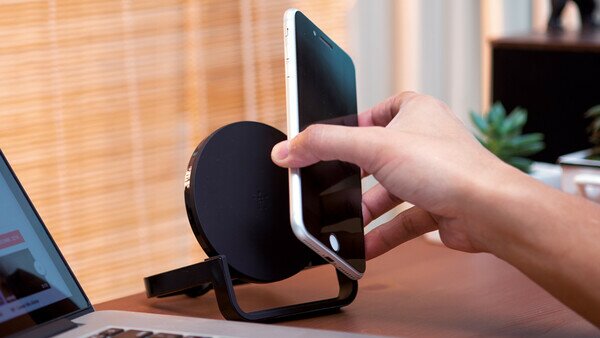Wireless chargers are versatile and easy to use. Some of them can charge several smartphones simultaneously without the constraint of electric wire and can hence cut down the use and number of chargers, charging wires and power sockets. In a test on 15 models of wireless chargers, the Consumer Council found that despite those with wireless charging standard Qi-certified models were generally more expensive, the performance of some models in charging speed and charging efficiency were in fact inferior to those Qi-compatible models and hence consumers should not purchase the product based solely on its price. Besides, majority of the wireless chargers (13 models) were found to require a comparatively longer time than the original wired phone chargers with the charging efficiency of the worst performing model reaching only 55% of the efficiency of original wired charger. Overall, the performance of wireless chargers was only average, and consumers should be more circumspect in selecting the products.
Covered in the test were 15 wireless chargers with all claiming to have maximum output power of 10 watts or below, capable of charging 1 smartphone at a time. Among the models, 9 were Qi-certified with prices ranging from $190 to $548 and provision of power supply unit (PSU) in 4 models; while 6 models were Qi-compatible with relatively lower prices from $90 to $199, and all requiring extra purchase of USB PSU for use with the chargers. Qi is the qualifying standard for wireless charger developed by the Wireless Power Consortium and Qi-certified wireless chargers are those that have passed tests required by Qi standard including safety, interoperability and energy efficiency; while Qi-compatible wireless chargers might not have undergone these testing.
The test focused on charging speed, ease of use and power consumption. The results indicated the overall performance in both types of wireless charger models was only average with the highest rating of only 3.5 points in both models, including the most expensive ($548) Qi-certified model and the cheapest ($90 without PSU provision) Qi-compatible model, showing that products marked as Qi-certified is not necessarily indicative of their effectiveness.
The majority of the claims on their maximum output power are similar but the charging speed among the models varied quite considerably. Comparing the time required for the 2 widely popular smartphones to be fully charged by the test models, the shortest and the longest charging time recorded were both Qi-compatible models with the shortest taking about 157 to 158 minutes while the longest took about 281 to 331 minutes, showing a vast difference in performance of nearly 80% and more than double. The disparity in charging speed could be attributed to the different Qi versions used by the wireless chargers, affecting their actual output power or due to excessive temperature rise during charging that caused the models to automatically activate the overheat protection, thereby lowering the output power.
When the same 2 smartphones were charged by the original wired phone chargers, they took less than 2 hours (111 minutes) and 3 hours (177 minutes) respectively to be fully charged in contrast to nearly 70% (10 models) of the wireless chargers taking 3 hours (180 minutes) or more to complete the same task, their performance was poor.
Similarly, in contrast to using the original wired phone charger, the charging efficiency among the test models varied by around 20%, providing only 55% to 81% charging efficiency, a rather inferior performance when compared with the wired phone charger due to their extra power consumption. All models were rated accordingly with 2.5 points or below, among them 3 Qi-certified models received only 1.5 points because of their high power consumption.
In assessing their ease of use, the test examined their user manuals and drop-resistance. Among the models, 2 Qi-compatible models were not provided with user manual; 1 model was without display on the state of charging; 1 model’s indicator light could easily be blocked by smart device rendering it not visible; and 1 Qi-compatible failed a simulated drop test from a table top of 0.75 meter above a ceramic floor.
The charging performance of wireless chargers is affected by multiple factors, when selecting and using wireless chargers, consumers can make reference to the following:
- Before choosing a wireless charger, ascertain if your smartphone supports wireless charging and the required input power;
- The greater the output power, the faster the charging speed of the wireless charger; but so it might also hasten the ageing of the battery;
- Some wireless chargers provide only USB charging cord, consumers will need to choose a suitable USB PSU in accordance with the rated input power, for instance, a wireless charger with maximum output power of 10 or 15 watts require a fast-charging USB PSU;
- The number of transmitter coils in the wireless charger affects its charging performance and if there is only 1 transmitter coil inside the charger, consumer should place the smart device in the centre of the charger’s transmitter coil, to achieve the optimal charging performance;
- Note that if the ring holder on the back of the phone is too thick, or the surface area of magnetic mount’s magnetic plate is too wide, both might affect the charging performance of the wireless charger.
The Consumer Council reserves all its right (including copyright) in respect of CHOICE magazine and Online CHOICE.



